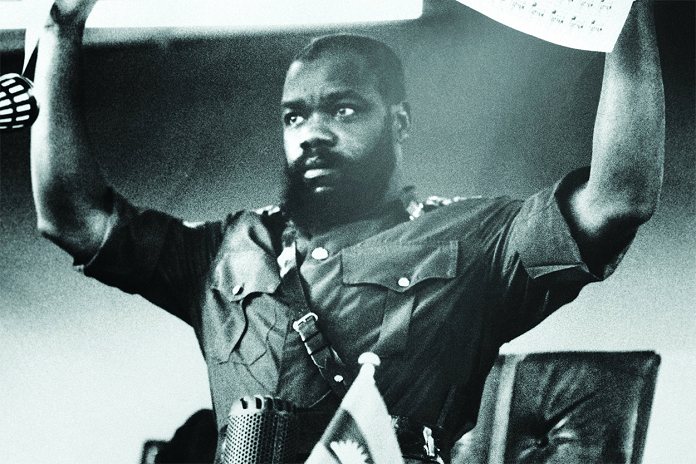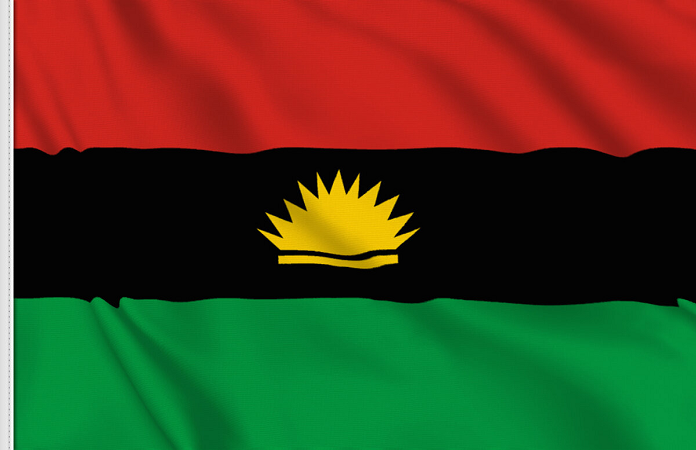Biafra is a name that was given to the South-Eastern Nigerians who seceded from Nigeria in 1967. The name was given by Lieutenant Colonel Chukwuemeka Odumegwu Ojukwu as suggested to him by his friend, Chief Frank Opigo.
There are many views on the origin of the name and who gave the name. This article will tell us more about the name Biafra, how it came to be, and the states that are considered Biafra Land.
Who Gave the Name Biafra?
The name was coined by two men who were instrumental in the actualization of the republic. They are Chukwuemeka Odumegwu Ojukwu and Chief Frank Opigo. There are different views on the origin of the name Biafra. Some say it is an Ijaw name, while others claim it is Igbo. With this, the real meaning of the name is controversial.

On May 30th, 1967, in a meeting made up of some Igbo and Ijaw soldiers, Lieutenant Colonel Odumegwu Ojukwu, who was moved with pity, decided to stop the suffering and redeem his people and other non-Igbo representatives of the area.
They agreed on a name and those to be part of this new republic. Chief Frank Opigo, who was Chukwuemeka’s friend, suggested the name Biafra to him, and the name was adopted, and the Republic of Biafra was declared.
The republic was known as the rising sun and had this as its flag because it emanated from the eastern part of Nigeria. It was hoped to be a place of equity, fairness, and peace for the oppressed, having broken out of the oppressions and killings from northern Nigeria.
What is the Meaning of Biafra?
The name was coined from two words “bia,” which means come, and “fara,” which means live. The name was born out of the quest to find a suitable name for a place of peace and equity for the oppressed people living in the southern part of Nigeria.
Biafra became a place of equity, harmony, and peace for the marginalized and oppressed. It is a name that was given to the secessionist eastern part of Nigeria that gained independence in 1967. The group operated as a country for just three years during the Nigerian/Biafran war.
When is Biafra Day?
May 30th is the day considered Biafra Day. This is because it was on May 30th, 1967, that Biafra was first declared a republic. It was proclaimed by an Igbo Officer, Chukwuemeka Odumegwu Ojukwu. Apart from being the day of independence, there are other reasons why this day is considered Biafra Day.
First, Biafra day is celebrated to remember all the Biafrans who were killed during the Biafra/Nigeria civil war that happened from 1967-1970. Secondly, it is also used to celebrate all the Biafran heroes who were killed in the course of the struggle for the actualization of Biafra, like the Nkpor Onitsha massacre.
During the ugly incident of the Nkpor Onitsha massacre, Nigerian Soldiers killed innocent and armless Biafran protesters celebrating Biafra day. Due to these reasons, Amnesty International and other Pro-Biafra groups agreed that the remembrance of these fallen heroes should continue on this said date all over the South Eastern States.
However, Biafrans should apply safety by making it a Sit-at-Home day for all in the South-Eastern States of Nigeria or Biafra Land. A day all Biafrans sit at home, closing their businesses to commemorate the fallen heroes of the region.
How Many States Makeup Biafra?
The expanse of the area considered to be Biafra Land is the South East and the South-South States of Nigeria. In recent times, the republic is referred to be made up of Igbos alone. Although it was mainly South-Eastern Nigeria that made up the republic, some South-South States are supposed to be part of it, but most of them are exempting themselves from the republic. This may be because Biafra failed at first.

This republic comprises several states in Nigeria, and the area is prominently Igbo and Christian-dominated. The states under the Biafra Land are Abia, Anambra, Ebonyi, Enugu, Imo, Bayelsa, Delta, Rivers, Cross River, and Akwa Ibom, and some parts of Edo State, Kogi State, and Benue State.
The region is inhabited mainly by Igbo people with other minority tribes like the Efik, Ogoni, Ijaw, Anang, Ibibio, Idoma, and Igala. Biafra land is made up of over 30,000 square miles, which is well watered all through the year.
It moves across a large extent of the Niger River, the Kwa River, the Cross river, and the Imo river and has its coast to the South Atlantic Ocean and the Gulf of Guinea. The Land is bordered in the east by Cameroon and in the north and west by Nigeria.
A Brief History of Biafra
The history of Biafra can be traced down to the period after Nigeria gained its independence from Britain in 1960. Since the country has a more northern and Muslim population, the Northern Muslims started maltreating and killing the Igbos in the north just six years after the independence.
This prompted tens of thousands of Igbos to migrate back to the eastern part of the country, which is more dominated by the Igbo ethnic group. This led to agitation from Igbos, who doubted if Nigeria’s oppressive military Government would allow them to survive and develop.
In the heat of these killings, Lieutenant Colonel Odumegwu Ojukwu was moved by pity and decided to end the sufferings of his people and other marginalized non-Igbo people of the area. Together with Chief Frank Opigo, who was his friend, they coined the name and declared the Republic of Biafra on May 30th, 1967.
This republic is made up of several states of Nigeria, especially the states of the South-East and South-South. Biafra is popularly known as the rising sun because it came from the eastern part of Nigeria. It was hoped to be a place of equity, fairness, and peace for the oppressed.
However, the republic could not last more than three years as it led to the Nigerian/Biafran civil war, which started in 1967 and ended in 1970. About 3.5 million Biafrans were killed during the war as Biafra was still a new country and not ready for war at that time. The war ended in a “No Victor, No Vanquished” agreement in 1970, and the Republic merged again with Nigeria.
